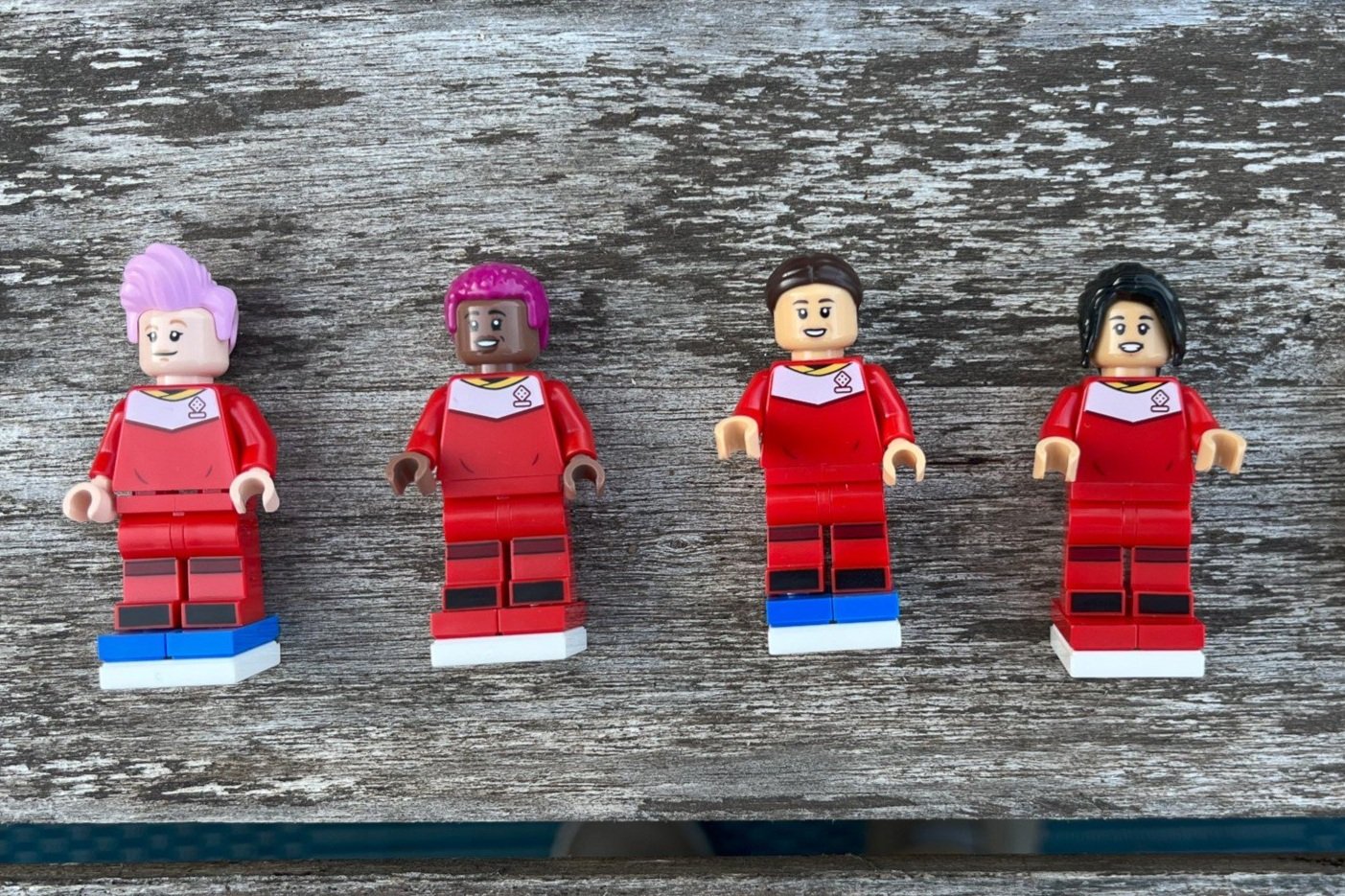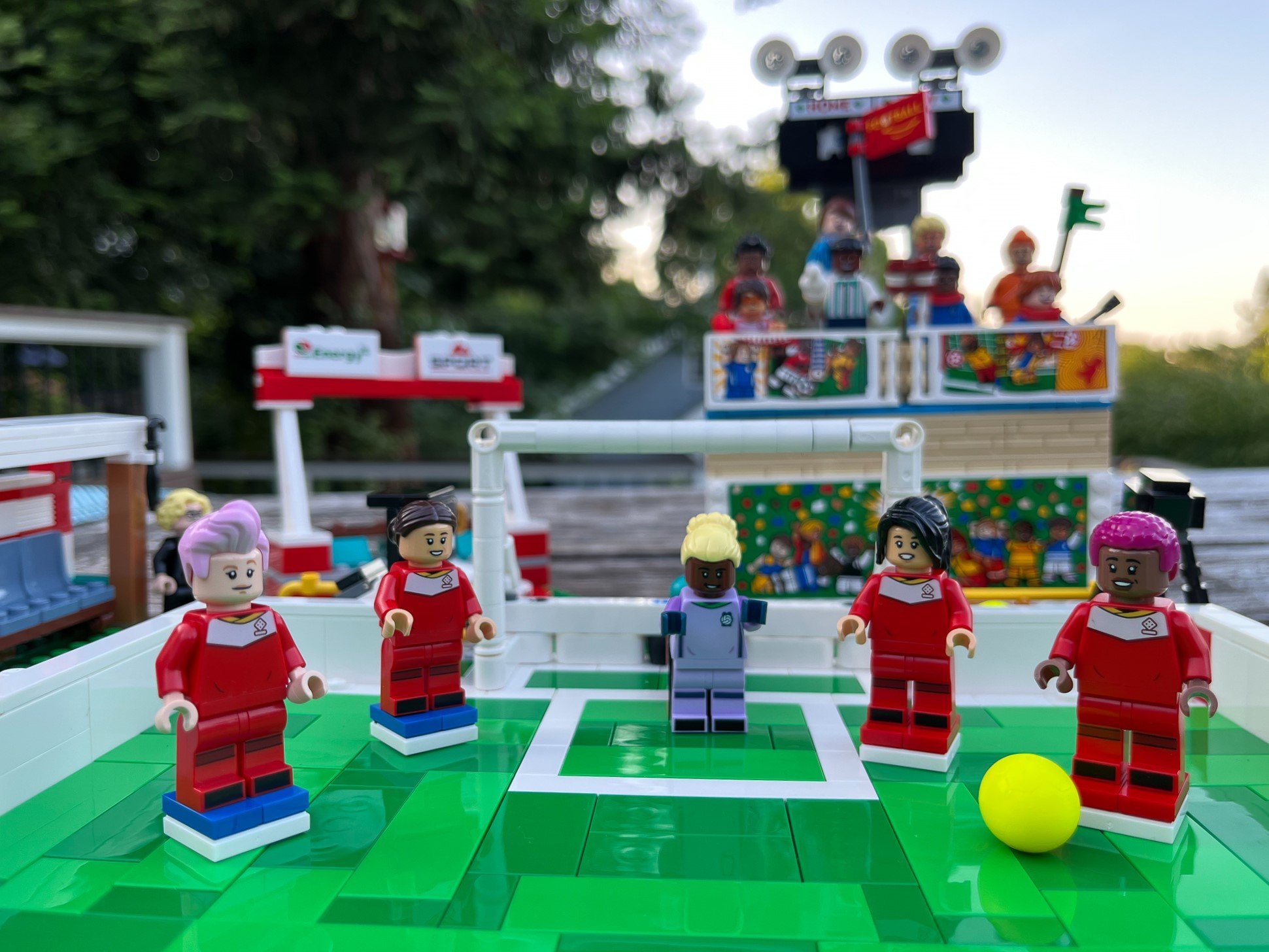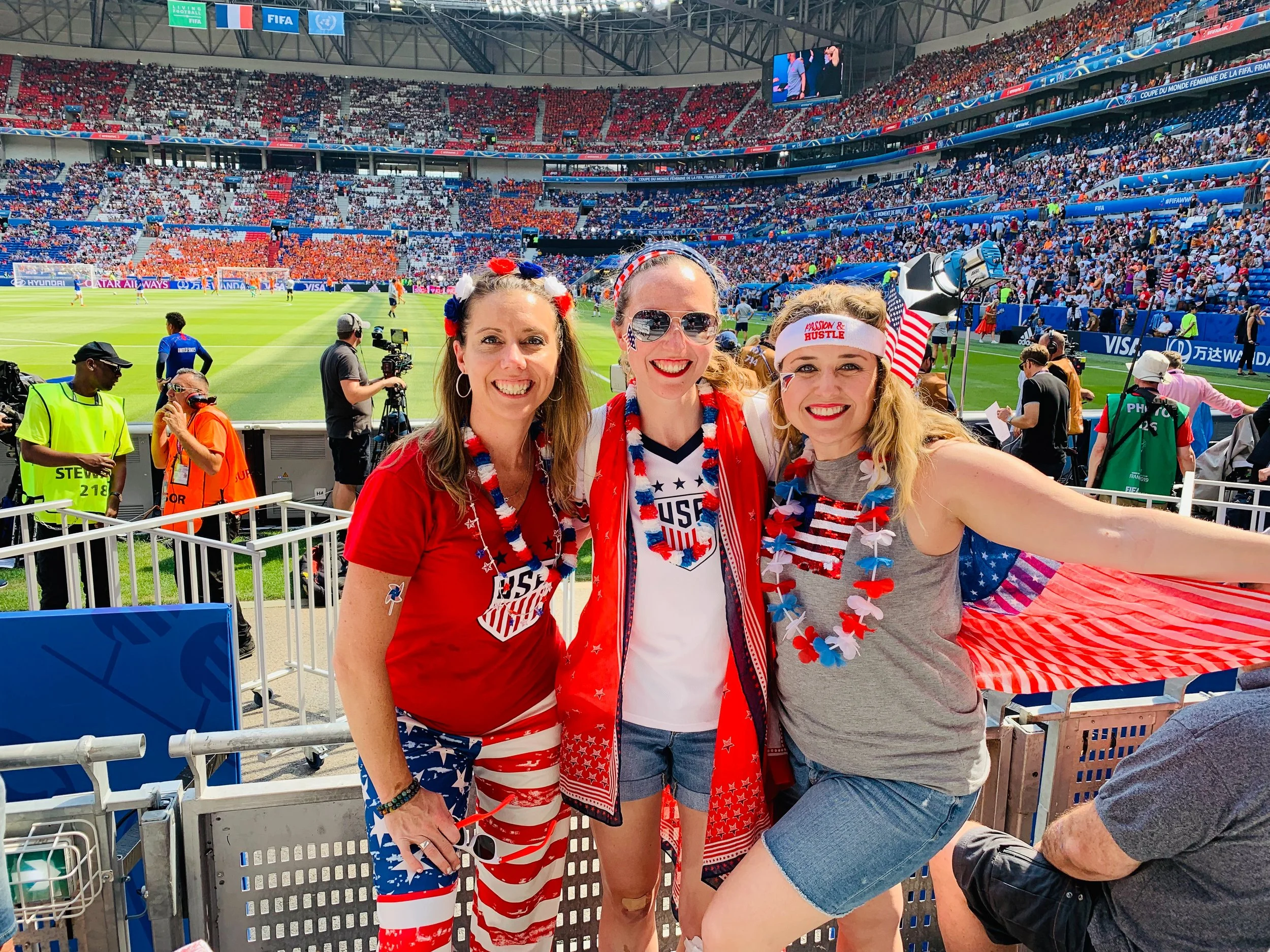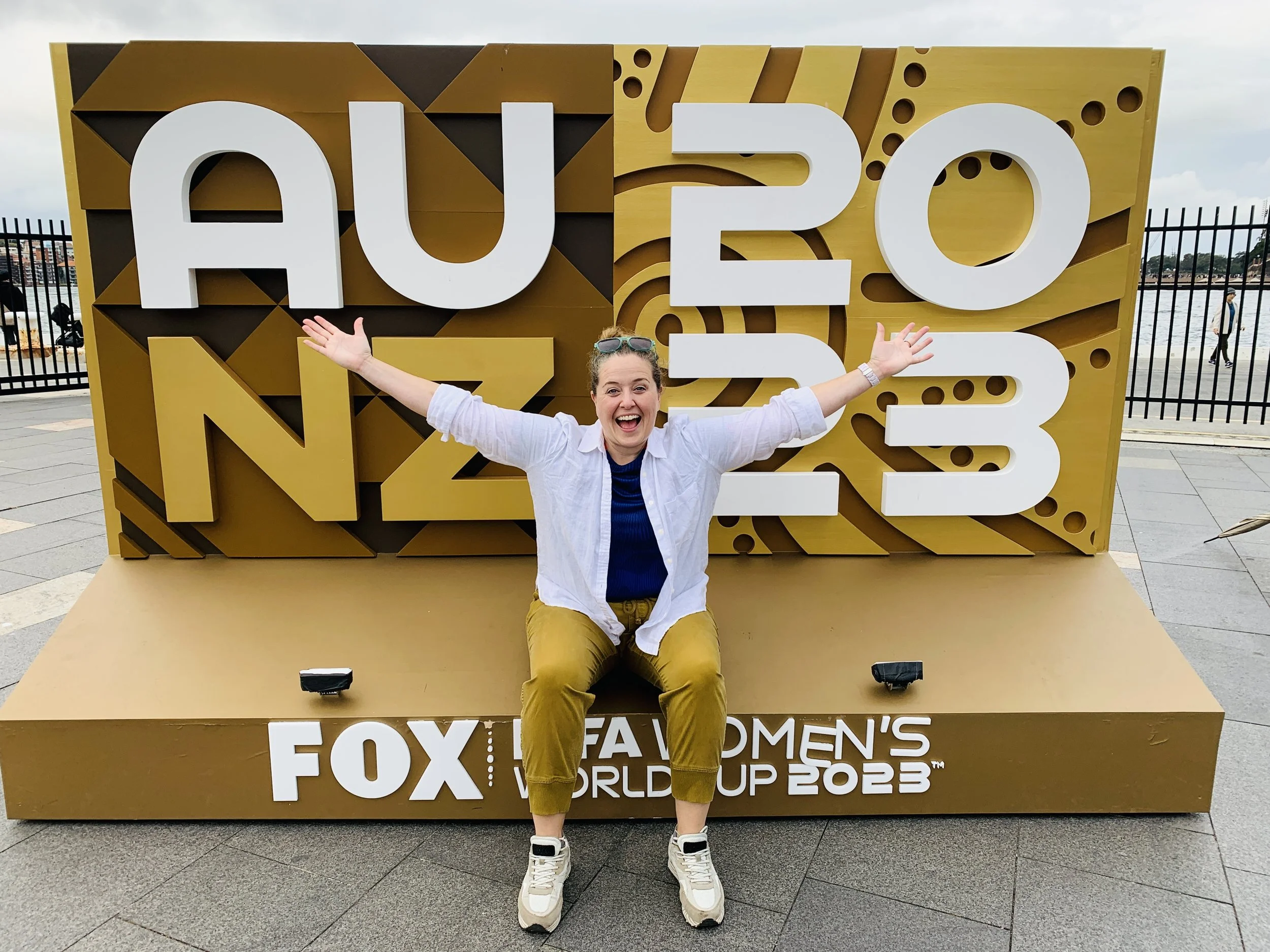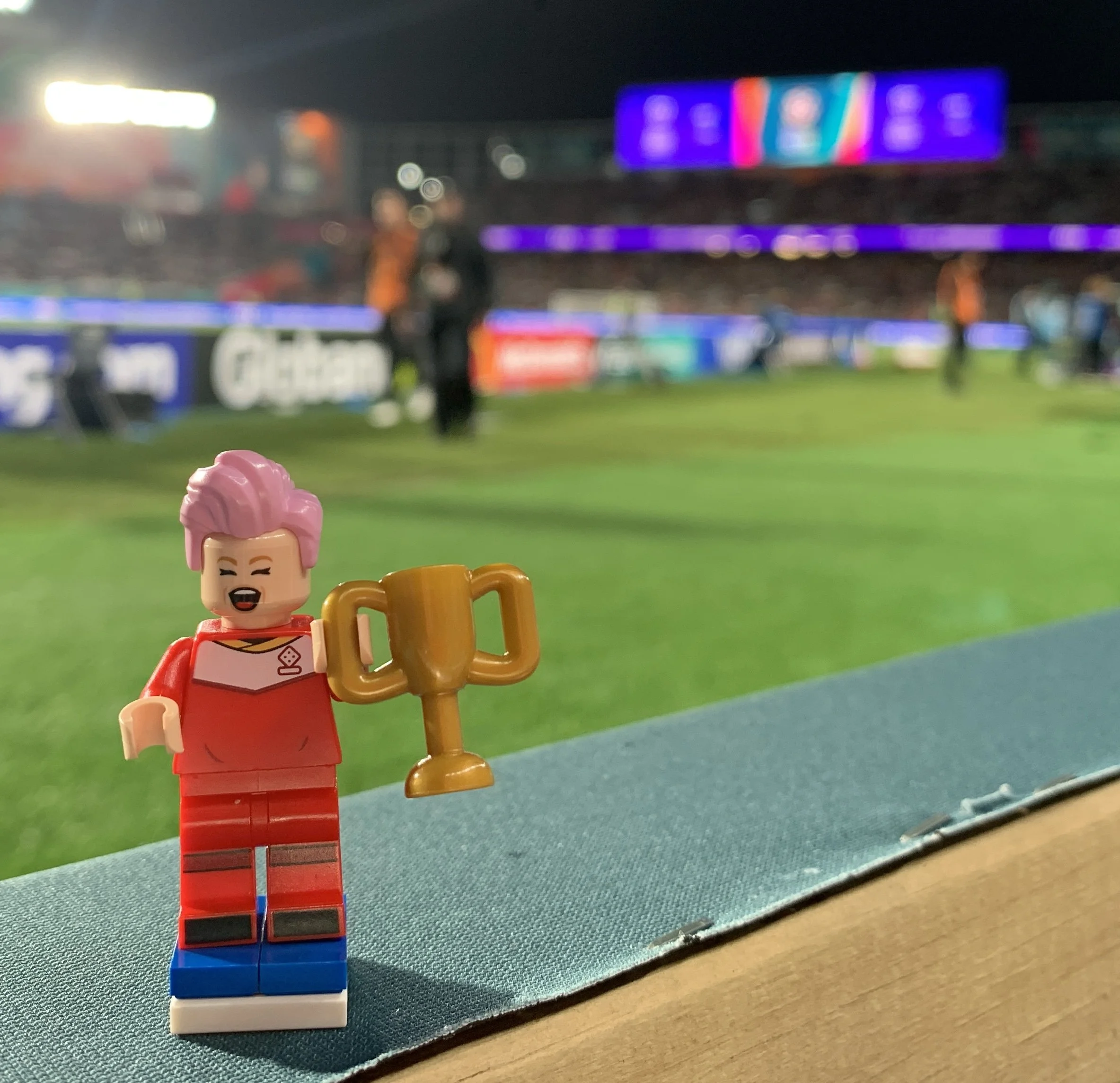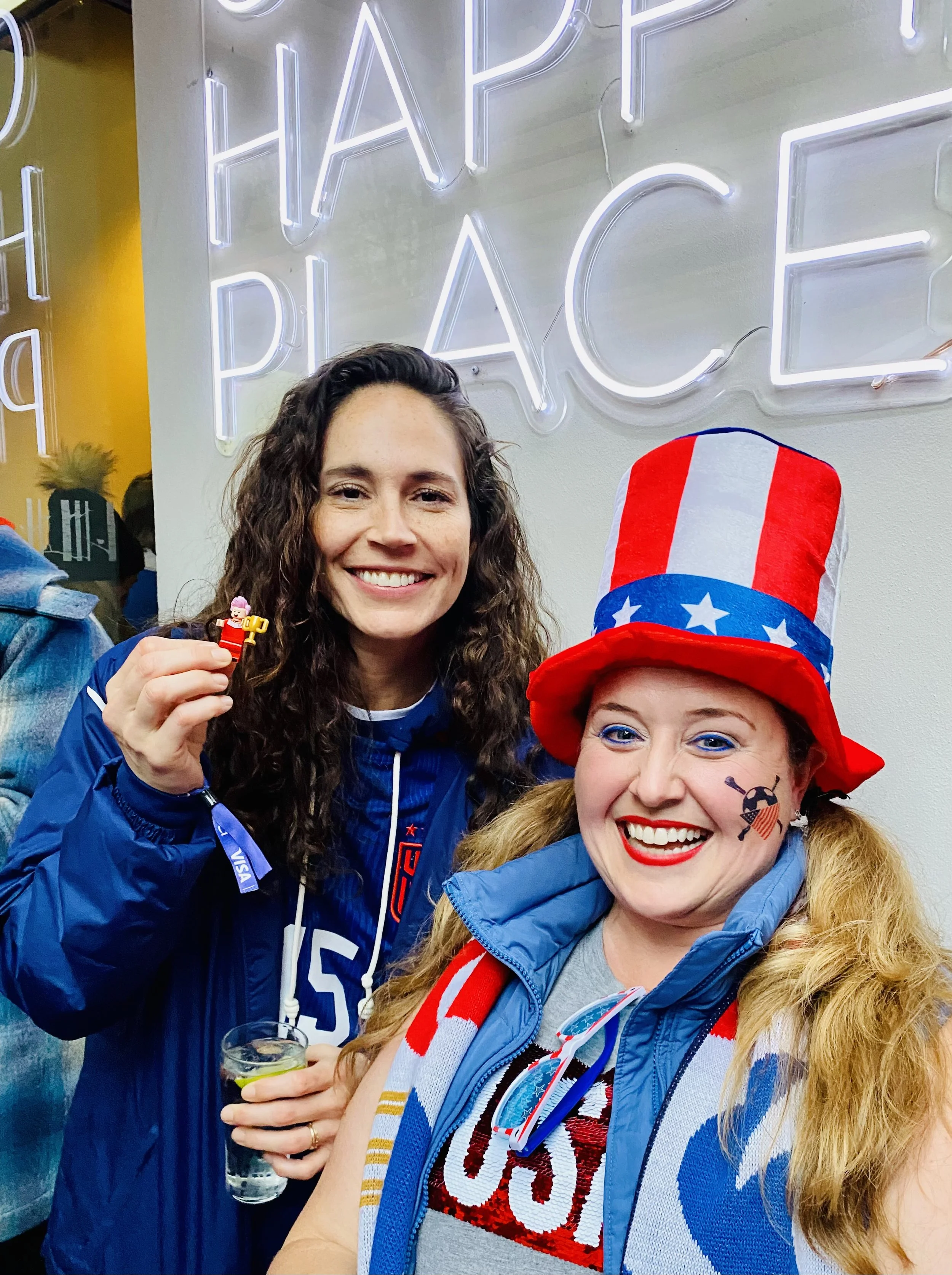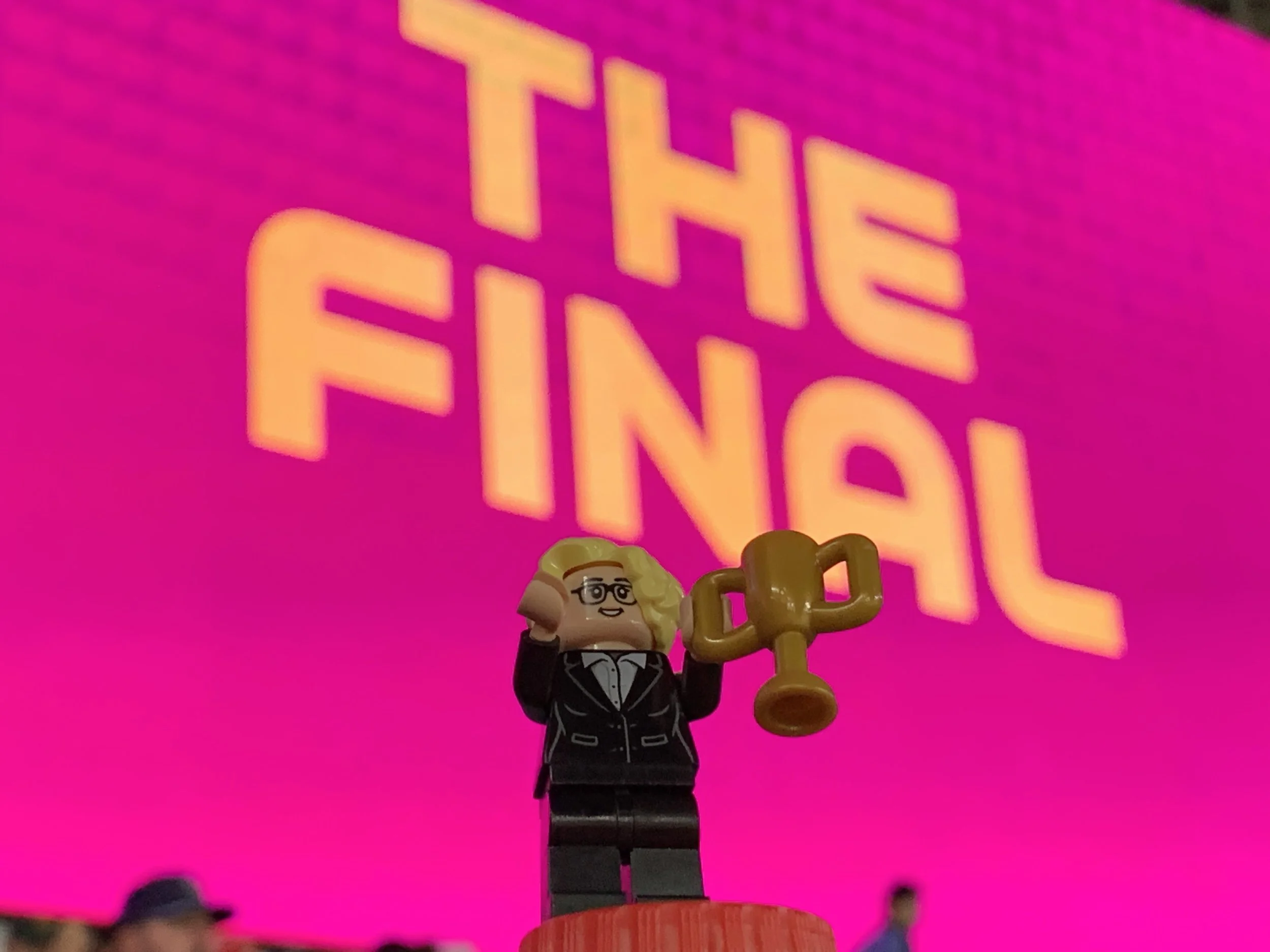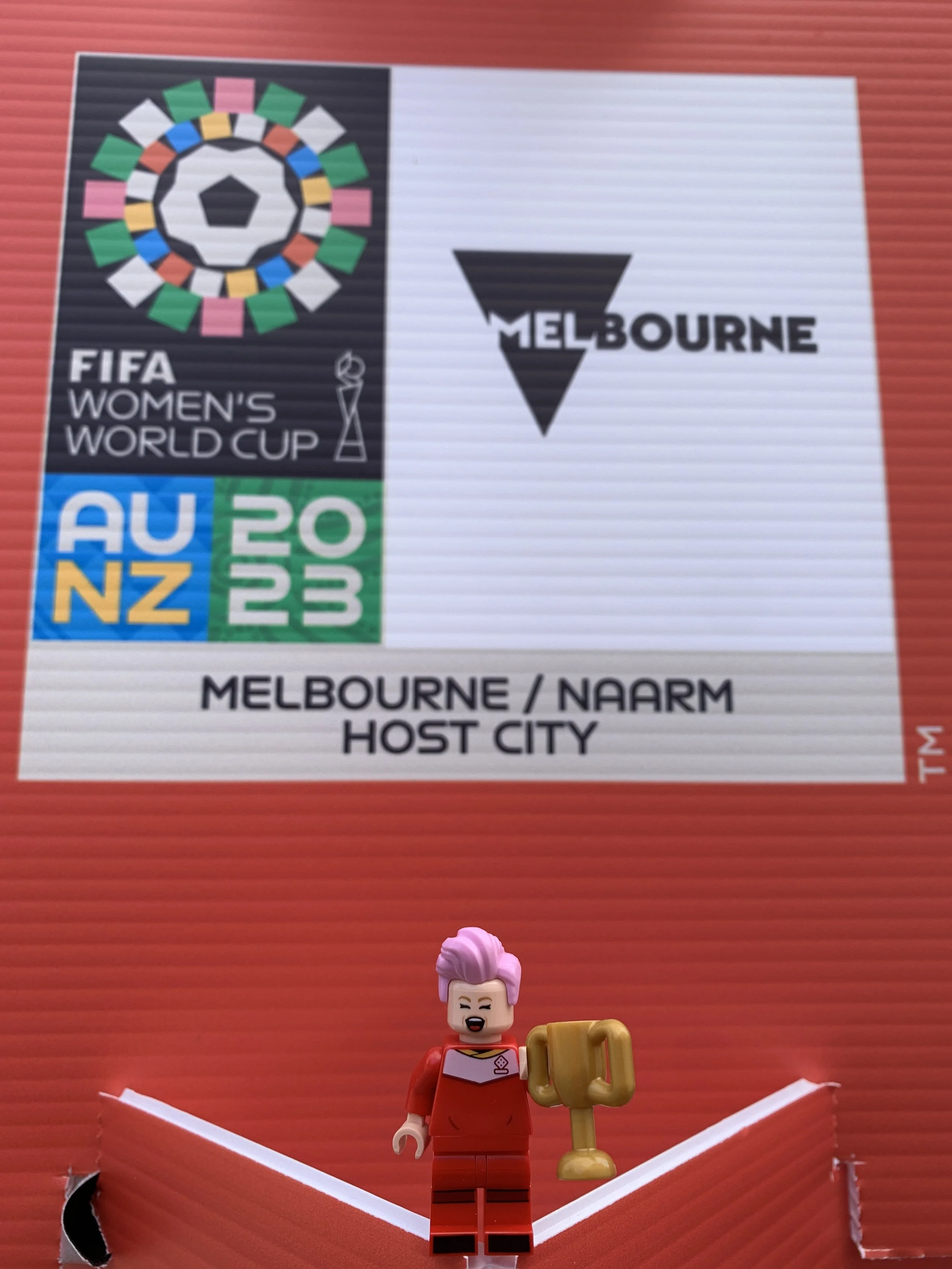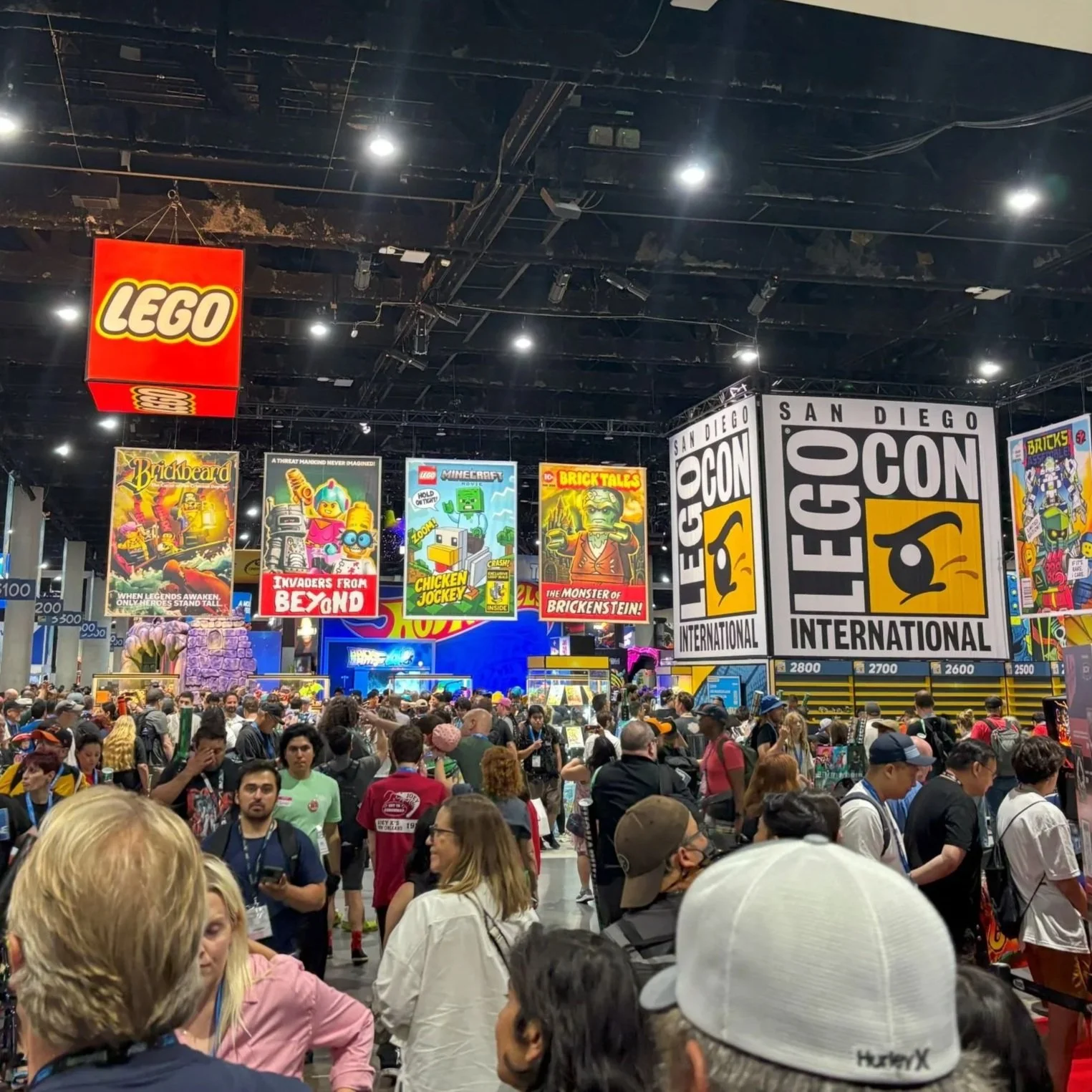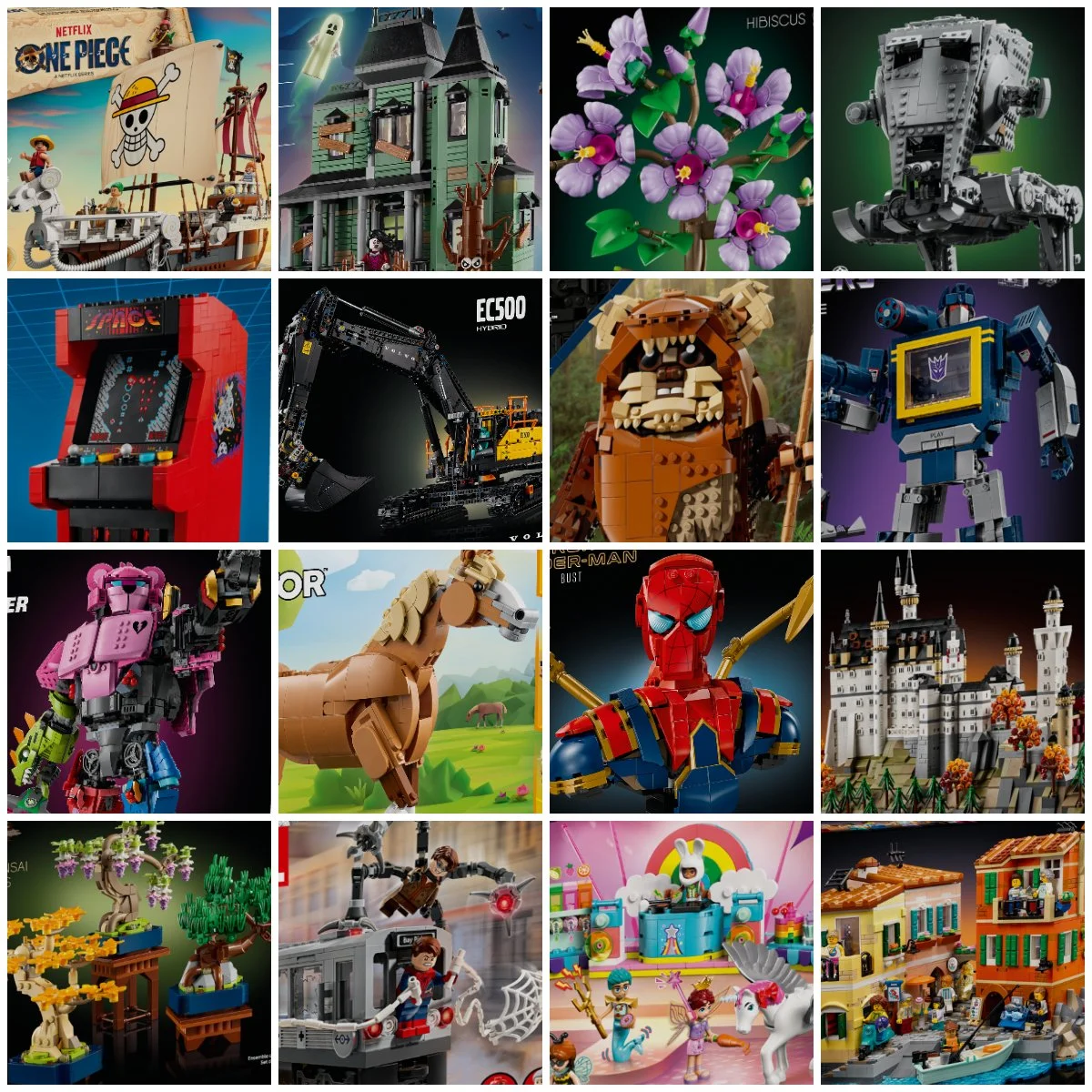Equal Playing Field: A Sporty LEGO Invitation to Girls Everywhere
/Today’s guest article comes from Chrissy Vaughn, a high-tech communications practitioner, LEGO lover, and lifelong soccer player, coach and fan.
When BrickNerd reached out asking if I’d be interested in sharing my thoughts on the newest LEGO Icons of Play set featuring world-class footballers, it was an instant and emphatic yes! A lover of LEGO, a lifelong player and fan of soccer, and a tireless advocate for barrier-breaking women and girls, I couldn’t be happier that LEGO has launched this set ahead of this summer 2023 FIFA World Cup.
7-year-old Chrissy in her first Goalbusters soccer uniform
Looking back, I know how fortunate I was (and still am). My parents instilled the “you can be whatever you want to be—dream big!” message early and often. As a middle-class family, we could thankfully afford the not-inexpensive sports equipment and team fees. My fair skin and blonde hair meant open doors stayed open.
It wasn’t until I hit high school that the reality of my being a female athlete gave me my first glimpse of the (perhaps naïve) bubble I’d been blissfully playing in. For the first time, my gender closed a door that I assumed I would be allowed – not just allowed but welcomed – to walk through because of my superior skills, talents, and strength. I heard “Sorry, this is only for boys” when I signed up for football tryouts. It didn’t matter that I was out-leg-pressing the football players in gym class or consistently out-distancing the current field goal kicker. My being a girl on the boy’s team was a non-starter. Not an option. Door closed.
I wish I could say this was the last time I personally felt the inequalities of being a girl or woman in sports. During my graduate school years at the University of Notre Dame (which has one of the best college women’s soccer programs in the country), I captained my MBA intramural soccer team—and was also the only woman on the team. A South American teammate of mine often brought his two young children to watch us play. I was dumbstruck on the day he told me, as his female teammate and captain, that his young son would “of course” play futbol, but his daughter certainly would not because “girls don’t play futbol.” This explained why he called me Chris on the field instead of Chrissy—he needed some way to get over his cognitive dissonance. I was a woman with soccer skills that matched his own—that just didn’t compute based on his cultural upbringing.
Chrissy playing pick-up in a Ghanaian village – once again the only female on the field
I share all this to set the stage for why this specific LEGO set matters. And why it matters to me and more importantly, to society and the world. More on that after I dive into the set itself!
Overall Impressions
I had a ball (actually two!) bringing this fun, colorful, and creative set to life. It was easy to assemble, even for someone who doesn’t build LEGO all that often—it took two of us 1.5ish hours to put together. I love that there are several separate builds—the field, a fan section, the bench, and a winner’s podium—that makes the finished set feel more dynamic.
Photos of LEGO 40634 Icons of Play by Stanley Lloyd
The outer box was a bit of a disappointment for me: it includes the names of four players but doesn’t mention women’s soccer or football or give any context as to who the players are or why they’re icons. While the build booklet includes a nice four-page spread that describes what makes each of these women “unstoppable,” I see this is a big, missed opportunity for better on-shelf awareness before the box is opened. (Also, why is Sam Kerr’s minifig pictured spinning the ball on her hand like a basketball? Huh?)
The Field
The set is only half a field made from flat “grass” bricks in two shades of green. It gives the feeling of being more like an indoor soccer field with walls right up next to the grass. The addition of the TV camera and VAR playback monitor give it a nice professional soccer vibe. I love the moveable mechanism for the goalie (which makes actually playing with the included ball more fun!), but another missed opportunity here to have that goalkeeper mini-figure be another world-famous icon.
Given my 40ish years of soccer obsession, I may be a bit more of a harsh critic, but I found the two included balls to be an odd choice: they are neon yellow with barely any noticeable soccer ball designs and they were really difficult to get out of the box meant to store them on the sideline. I thought it was odd that they didn’t use the black and white soccer balls I’ve seen in other sets, even as recently as last year’s Collectible Minifigure Football Referee.
The water bottle station is kinda weird too—it is sort of cute, but not a necessary addition in my opinion. The bench is accurate to real-life and well-made, but players from different teams need two benches, not one. Buying two sets would make this feel like a more complete set with a full field and a bench for each team, though you’d need another color for the opposing team’s jerseys.
The Fans
I simply love the grandstand. It’s an interactive fan section with a crank to move the cheering mini-figures up and down like they’re doing the wave. The changeable scoreboard with stadium lights on top is also really well done. I wish I’d had fans that rabid when I was playing in big stadiums!
The fans are also an obvious way of including a bit more diversity in LEGO’s lineup. It was refreshing seeing so many different skin tones available in one reasonably priced set. Soccer is a truly global sport with fans and players spanning all continents, so nice to see LEGO reflecting that color!
Building The Team
Saving the most important element of this set for last—the four badass women on the pitch: Megan Rapinoe, Yuki Nagasato, Asisat Oshoala, and Sam Kerr. I applaud LEGO for their choices here: four diverse women representing the US, Asia, Africa and Australia—each barrier-breaking and world-changing athletes in their own way.
Megan Rapinoe, arguably the most well-known female footballer in the US right now, is a powerhouse combo of mad skills on the pitch and a fearless equality advocate who doesn’t shy away from any fight whether for equal pay or gay rights. (Fun fact: As a Seattle resident, I get to see Megan play up close with the NWSL’s OL Reign all the time. I can attest, she’s the real deal!)
Chrissy trying not to fangirl during a Megan Rapinoe meet-n-greet
Chrissy and fellow OL Reign fans cheering on Megan and the hometown Seattle squad during an NWSL game
World Cup–winner Yuki Nagasato is the first woman to ever play professionally for a men’s football team in Japan—baller. I had the privilege of seeing Yuki play in person at the 2015 World Cup final against the USWNT. We won that one 5-2—sorry Yuki!
Sam Kerr is one of my favorites currently playing women’s soccer—she’s just unbelievably good and flippin’ fun to watch. My opinion is great, but her stats corroborate (trust me on this one, I can’t list them all here!). Net net, she’s considered to be one of the best forwards in the history of the women’s game. While I had to cheer against her team in the two World Cups I’ve seen her play in and in all the NWSL games she played against my hometown team, I always cheer her on individually.
Asisat Oshoala is the one featured star I don’t know well, but if I lived in Europe or Africa, that would be a different story. And I’ll definitely be watching for her after this. Widely considered one of the best African female footballers of all time, this Nigerian’s hot pink hair is clearly not the only part of her that has game!
Speaking of hair, I love that LEGO stayed true to signature hairstyles and colors for the players, even including extra styles to swap in/out.
Given each player has their name and current number on their jersey, but no national team affiliations, it’s clear that they’re each participating as individual players without licensing agreements with FIFA or any international teams or leagues. While disappointing that each player doesn’t have their home team’s jersey, I’m sure the gauntlet of licensing deals with that many entities would have been a beast. That said, it’s a shame that the build booklet doesn’t also include a nod to the upcoming 2023 World Cup and more general information and stats about the state of and momentum of women’s soccer globally.
A quick aside: The coach minifig is the spitting image of Sarina Wiegman, the manager of England’s women’s national team and the coach for the upcoming Women’s World Cup. It is odd that this obvious reference is not mentioned on the box or in the booklet. The minifig clearly resembles her signature look—glasses, blonde hair, black suit. Perhaps a partnership agreement fell through at the last minute, though I’m glad to still have her minifigure (it’s official in my mind!).
Representation Matters
Now back to why this all matters. I’m fully aware that not everyone likes or cares about sports. And even people who play or watch sports may not care about soccer. The same can be said for fans of LEGO. But soccer does happen to be the world’s most played and most watched sport—literally, half the planet are soccer fans. That’s 3.5 billion people. And half the world is also women. I’m sure LEGO has the Venn diagram of that overlap. Needless to say, they know the audience is HUGE.
Chrissy at the 2019 Women’s World Cup final in Lyon, France
But that’s not really what matters. Have you heard someone in your life say, “You can’t dream it if you can’t see it.” I have. I truly believe this to be true. When the door to the football team was slammed in my face in 1994, I didn’t have Sydney McCorkle’s example that would’ve shown me that I did, in fact, deserve a spot on that team. She broke through that barrier 15 years after I tried.
If young girls don’t see other girls or women doing something, research shows they’re less likely to consider that activity an option for them in the future. This holds true for gender, race, sexual identity—we observe the world around us looking for community and inspiration.
The USWNT’s celebrations – Megan Rapinoe holding the trophy – after clinching their 4th Women’s World Cup title.
Research from the Women’s Sports Foundation shows that by age 14, many girls are dropping out of sports at two times the rate of boys. Why? Factors include lack of access, cost, safety, social stigma, quality of the experience, and… lack of positive role models. The organization says, “Today’s girls are bombarded with images of external beauty, not those of confident, strong female athletic role models. To some girls, fitting within the mold that they are constantly told to stay in is more important than standing out. Peer pressure can be hard for girls at any age; when that pressure isn’t offset with strong encouragement to participate in sports and healthy physical activity, the results may lead girls to drop out altogether.”
Women’s World Cup fan donning a homemade “Equal Pay” jersey to the 2019 final in Lyon
Sports and being part of a team have proven over and over to help children with confidence, positive self-image, leadership skills, and healthy lifestyles in adulthood. Boys who stick with sports get a huge leg up in life over girls who never play or who quit at an early age. The ramifications down the road just pile up.
Marie Claire named 36 ways women still aren’t equal to men just this year, including workplace gender pay gaps, women being underrepresented in government and C-level top jobs, women entrepreneurs receiving less funding and investments, and women being far more likely to be victims of human trafficking.
I’m not saying that girls not playing sports directly cause these dire societal consequences, but in order for any of these issues to improve, it will take major shifts in how we recognize and celebrate “unstoppable women” who are breaking through barriers and carving a path for others to follow. Women like the ones LEGO is spotlighting in this soccer set.
Progress is being made. The last four years have been especially groundbreaking for women’s soccer:
The FIFA Women’s World Cup in France in 2019 was the most watched edition of the tournament ever, with a global audience of 1.12 billion viewers, a 30% increase from the previous edition in 2015. (Source: Forbes)
FIFA (after a LOT of pressure) is increasing the Women’s World Cup prize purse by 300% to $150 million for the upcoming 2023 tournament. (While this is three times the 2019 figure and 10 times more than in 2015, it is still considerably lower than the $440 million total prize money awarded at the men’s World Cup in Qatar last year.) (Source: CNN)
The fan base for women’s soccer is expected to grow from 144 million fans to 328 million fans by 2033. (Source: USA Today)
Canada’s first women’s professional league will be kicking off in 2025, led by the efforts of Canadian national team superstars Diana Matheson and Christine Sinclair. (Fun fact: I had the pleasure of hosting Diana as a guest in my home for the 2017 Seattle Reign season because at the time the NWSL league wasn’t paying to cover housing costs for all the players.)
Former Canadaian national team player Diana Matheson with young fans at Canada vs. US Women’s friendly match in 2017
I was lucky enough to be in Lyon, France in 2019 for the FIFA Women’s World Cup final when the US beat the Netherlands to clinch their fourth World Cup trophy. The celebration was raucous, but hearing 58,000 people in the Parc Olympique Lyonnais stadium start chanting “Equal pay! Equal pay!” took the experience of being there to a new level. While the USA women were competing to be the best in the world, they were also mired in active litigation with the US Soccer Federation to receive equal pay for equal play. That win put a final nail in the coffin of anyone trying to argue that they didn’t deserve more. In case you missed it, the USWNT won that fight last year.
The Goal
Initial reactions to LEGO’s new set have been overwhelmingly positive from the US Soccer and NWSL fan groups I’m in, with some fans shouting, ”Take my money now!” into their social media feeds. But as is the case with anything that even remotely touches social issues of gender, race and sexual identity, haters are adding their vitriol to the conversation. I won’t give them the added megaphone by repeating their words here. Sometimes though the negativity doesn’t just come from haters but from people who don’t understand that this set wasn’t made with them in mind or maybe they don’t have a frame of reference for the set in their lives.
My hope is that the next young girl who sees these inspiring, badass women on the pitch – whether in real life or in this LEGO set – will see one less barrier in front of them. They’ll see that women deserve the spotlight, deserve the support, deserve the compensation and most of all deserve to be celebrated. Their dreams won’t be hampered by a society or a culture that thinks they don’t belong in sports because they’re the wrong gender. They won’t be stopped by someone who is afraid that their succeeding means less for someone else. Sport—and life and LEGO—is not a zero-sum game. There’s room for all to play.
Morgan Andrews, former NWSL pro soccer player with the Seattle Reign, and I with two small superfans (and LEGO lovers!)
So what can you do to support women’s soccer? The easiest thing to do is watch! Tune in. Go to a game (even better, buy a season ticket!). Support the sponsors. Encourage your sister or your daughter to play. And at the risk of sounding like a LEGO advertiser: Buy this LEGO Icons of Play set because representation matters.
Update Oct. 2023
The Icons of Play unstoppable minifigs and I had a blast down under at this summer’s 2023 FIFA Women’s World Cup hosted in Australia and New Zealand!
I was lucky to see four of LEGO’s spotlit women—Megan Rapinoe, Sam Kerr, Asisat Oshoala, and Sarina Wiegman—wow audiences and shatter records of all sizes. All told, 1,978,274 fans watched the 64 matches played across ten stadiums, an improvement of more than half a million on the previous record and smashing Fifa’s ticket sales target of $1.5 million.
While the US didn't have the tournament they hoped for, Australia blew past all expectations, making it to the semi-finals. The Matildas, captained by Sam Kerr, now hold the record for the most-watched television show on record in Australia and own a brand that saw a five-fold increase in value, making them the most valuable sports team, men or women’s, in Australia.
It was exhilarating to be part of women's soccer history—so many barriers broken by unstoppable women, but also exposure of realities that still need attention. For example, the Jamaican women's team had to start a Go Fund Me page to crowdsource enough funds to afford the travel to the tournament. And England's coach Sarina Wiegman, now the first coach male or female to take two different nations to a World Cup final, reportedly makes $510,000 a year, compared to England men’s coach Gareth Southgate’s $6.4 million salary. Soon after the tournament, Wiegman won UEFA Women’s Coach of the Year and dedicated the award to the World Cup-winning Spanish team because of their infuriating and misogynistic treatment by their home federation.
This month, the US and Seattle pay tribute to the legendary Megan Rapinoe as she plays her last match with the USWNT and with her NWSL Club, OL Reign. Over 34,000 fans in Seattle broke the all-time NWSL attendance record to thank Megan for her positive impact on our community over the past 11 years with the club. While her time on the pitch will soon be done, her advocacy work for women’s, LGBTQ+, and racial equity will continue--likely stronger than before.
The support for this LEGO Icons of Play set has been overwhelming—a great holiday gift for those soccer fans in your life (hint hint)!
LEGO 40634 Icons of Play is available now for US $99.99 / UK £89.99 / CA 129.99 / AU $169.99.
DISCLAIMER: This set was provided to BrickNerd by LEGO. Any opinions expressed in this article are those of the author.
Have you ever combined sports and LEGO? Leave your thoughts in the comments below.
Do you want to help BrickNerd continue publishing articles like this one? Become a top patron like Charlie Stephens, Marc & Liz Puleo, Paige Mueller, Rob Klingberg from Brickstuff, John & Joshua Hanlon from Beyond the Brick, Megan Lum, Andy Price, John A., Lukas Kurth from StoneWars, and Wayne Tyler to show your support, get early access, exclusive swag and more.







